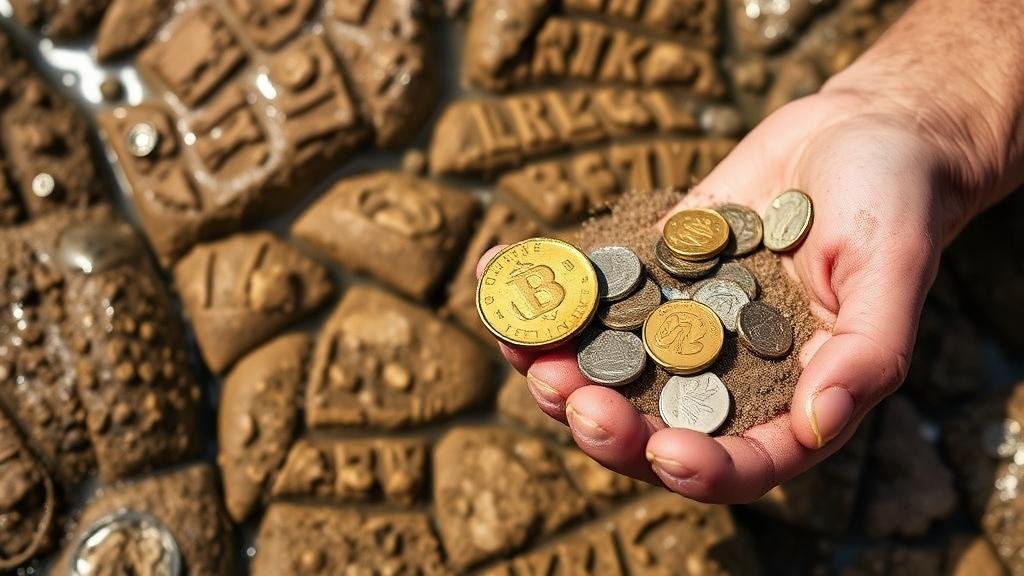Recovering Coins and Artifacts From Dried Riverbeds and Reservoirs
Recovering Coins and Artifacts From Dried Riverbeds and Reservoirs
The practice of recovering coins and artifacts from dried riverbeds and reservoirs has gained momentum in recent years, driven by both amateur enthusiasts and professional archaeologists. These environments often serve as treasure troves, holding remnants of historical significance that can provide insight into past civilizations. This article explores the methods, challenges, legal considerations, and successful case studies related to the recovery of these valuable finds.
The Importance of Historical Context
Understanding the significance of artifacts found in dried riverbeds and reservoirs is critical. e areas often have a rich history; rivers have served as vital trade routes, and their banks have housed settlements for centuries. Artifacts recovered from these locations can include coins, tools, pottery, and personal belongings, each telling a story about the people who used them.
For example, the Thames River in London has revealed thousands of artifacts, dating back to the Roman period, showcasing daily life and commerce of ancient Britons. Similarly, the Mississippi River has yielded coins and tools that illustrate the historical trade patterns in North America.
Methods of Recovery
Recovering artifacts and coins from dried riverbeds and reservoirs involves several specialized methods that cater to the unique conditions of these environments. Below are some commonly used techniques:
- Metal Detecting: Metal detectors are essential tools for locating metallic artifacts. Different types of detectors are designed for various conditions, such as waterproof detectors specifically designed for use in shallow waters.
- Hand Digging: Manual excavation can often be necessary, especially in areas where metal detectors fail to identify targets due to mineralization in the soil.
- Remote Sensing: Using technology such as ground-penetrating radar (GPR) allows archaeologists to identify buried objects without disturbing the sediment, thus preserving the context of the site.
It is crucial that recovery methods prioritize the preservation of the artifacts. Detailed records must be kept regarding the location and depth of finds to ensure proper analysis and interpretation later on.
Challenges Faced in Recovery Efforts
While the recovery of coins and artifacts presents exciting opportunities, it also poses several challenges:
- Environmental Factors: Weather conditions can hinder recovery efforts. For example, flooding can submerge newly exposed artifacts, while drought can make areas too dry and compact for probing.
- Legal Regulations: There are laws governing the excavation of historical artifacts, which can vary significantly by region. It is essential to be familiar with the relevant laws to avoid penalties.
- Competition: Increased interest in treasure hunting has led to a saturation of enthusiasts in popular sites, making it more difficult to recover significant finds.
Each of these challenges requires careful planning and adaptability to ensure successful and responsible recovery of cultural heritage.
Legal Considerations and Ethical Practices
Before engaging in recovery activities, it is imperative to understand the legal framework governing artifacts. In many countries, laws dictate that artifacts found in public waterways are regarded as state property. As a result, any recovery must be reported to authorities, and permits may be required.
- Ownership Rights: In the United States, the Abandoned Shipwreck Act of 1987 declares that sunken ships in navigable waters are owned by the state. Similar regulations apply in other countries.
- Ethical Standards: Recovery efforts should adhere to the principles set forth by organizations like the Society for American Archaeology, which emphasize the preservation of archaeology for future generations.
By adhering to these laws and ethical guidelines, treasure hunters and archaeologists can ensure that their activities contribute to the broader understanding of history rather than detract from it.
Case Studies: Successful Recoveries
Several notable case studies illustrate the potential of this field:
- Lake Champlain: In June 2019, an exploration team discovered a shipwreck dating back to the Revolutionary War, along with numerous artifacts. This recovery illuminated maritime history and trade in the region.
- Wabash River: An archaeological team recovered a cache of 1800s coins and personal effects near a site believed to have been a bustling trading post. finds provided a glimpse into the daily lives of early American settlers.
These cases highlight the value of interdisciplinary collaboration in archaeology, as various methodologies lead to richer contextual understanding.
Actionable Takeaways
For individuals interested in recovering coins and artifacts from dried riverbeds and reservoirs, consider the following steps:
- Research legal requirements in your area to ensure compliance with local laws.
- Invest in appropriate technology, such as metal detectors or GPR systems, tailored to your target recovery environment.
- Join local archaeological societies or treasure hunting clubs to gain knowledge and build networks with experienced enthusiasts.
By approaching recovery efforts with respect for the environment and historical significance, enthusiasts can contribute meaningfully to our understanding of the past.


